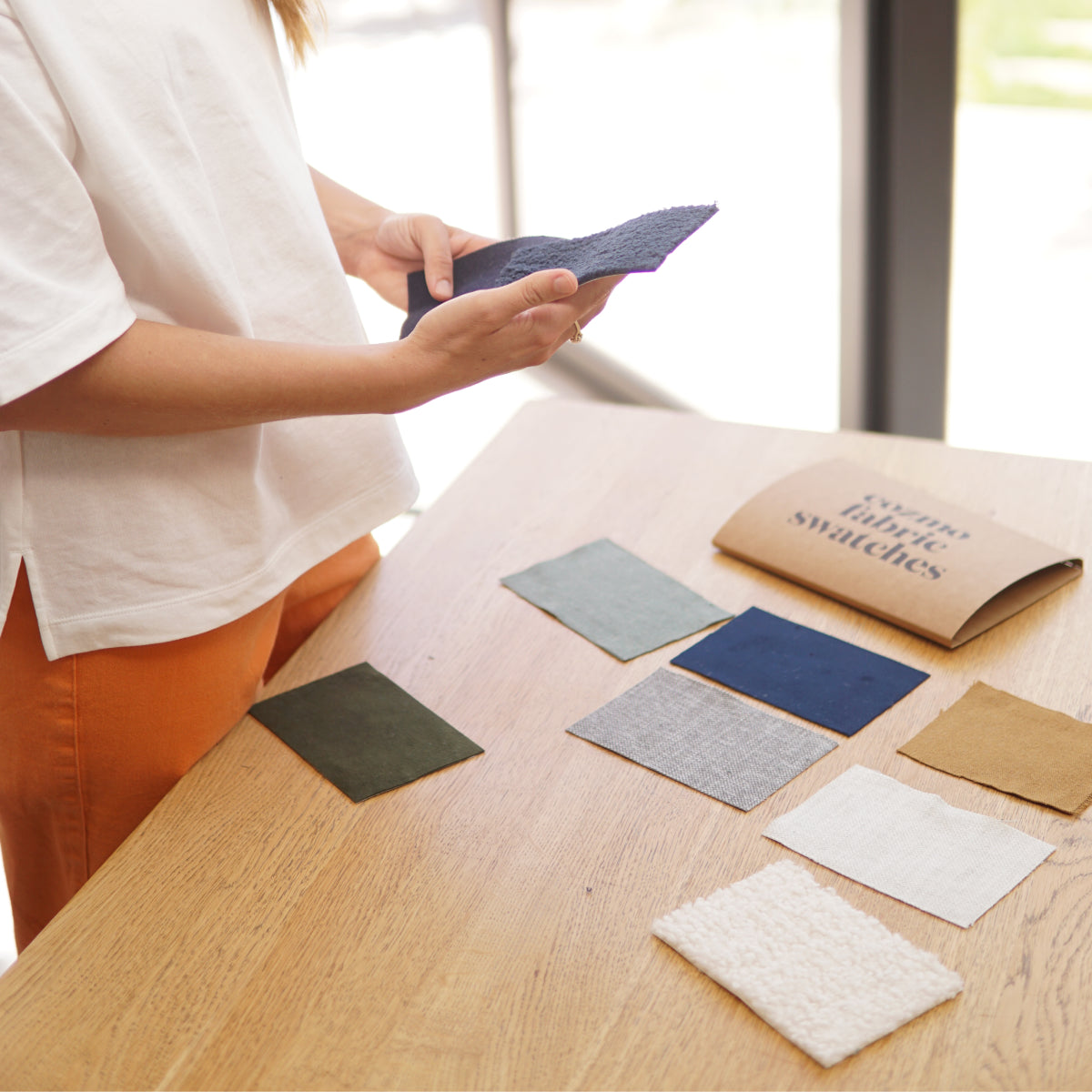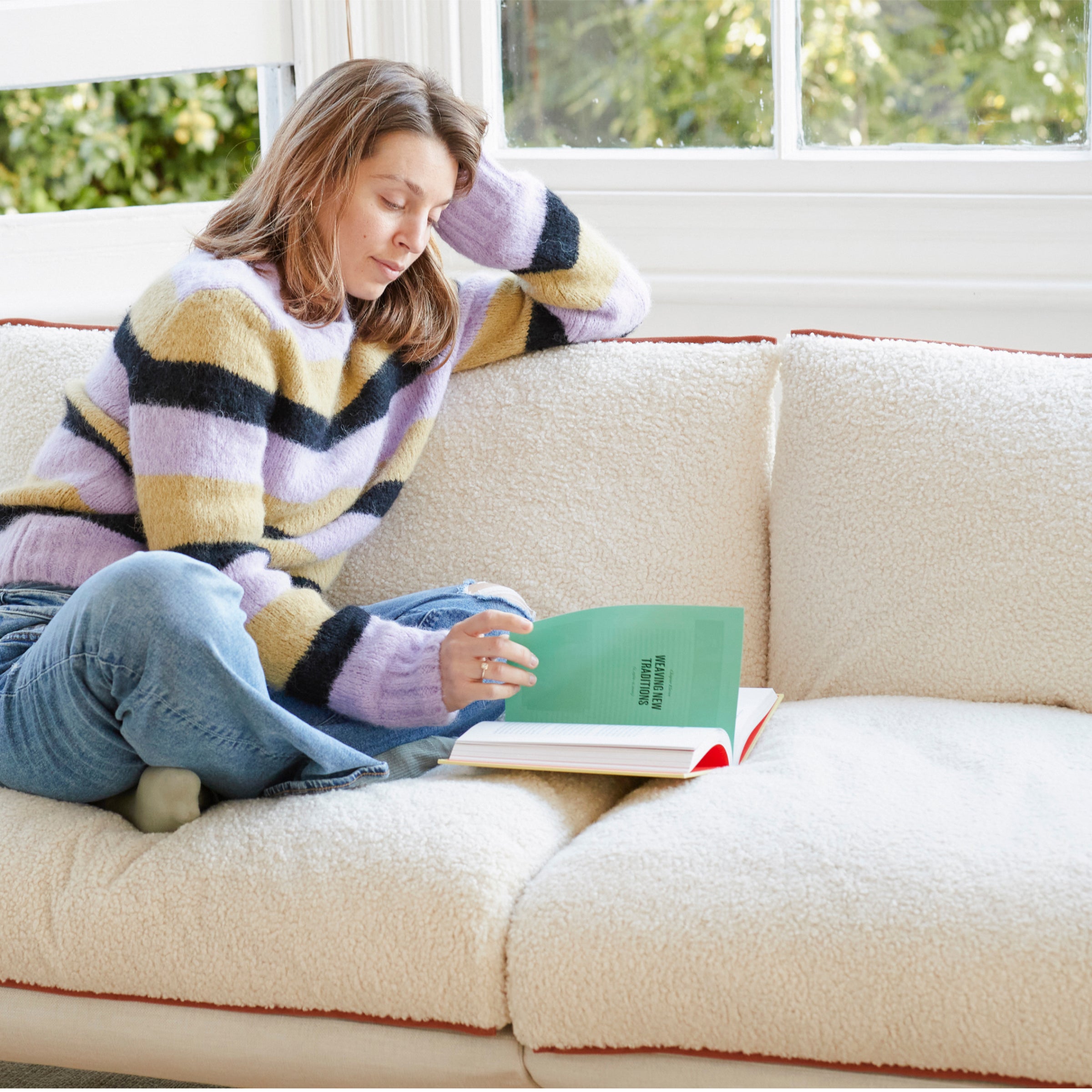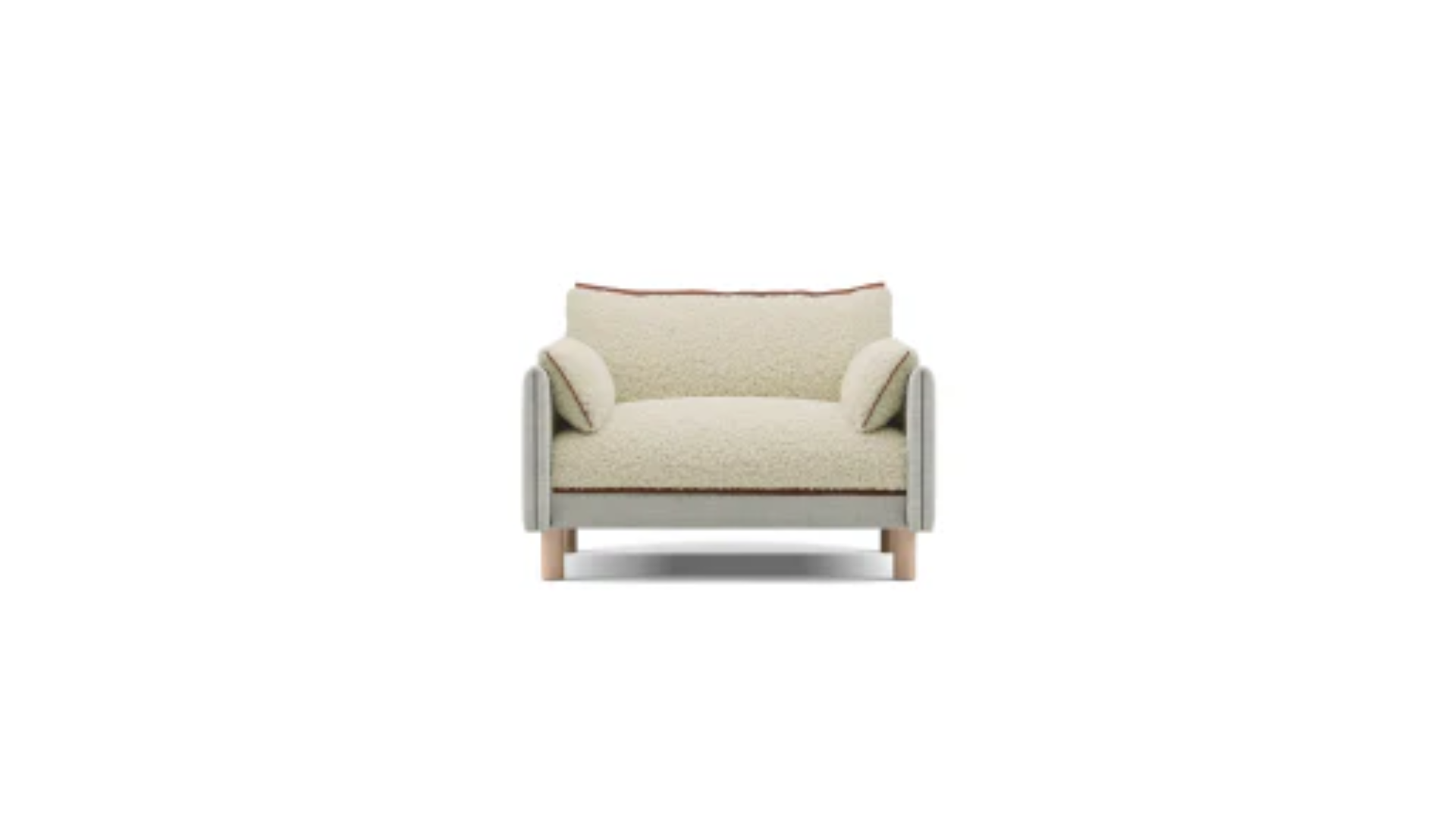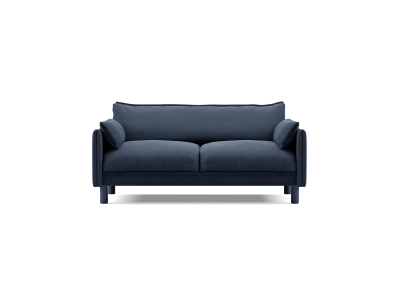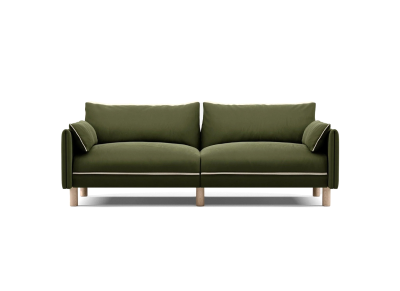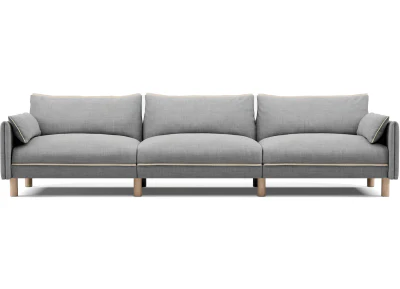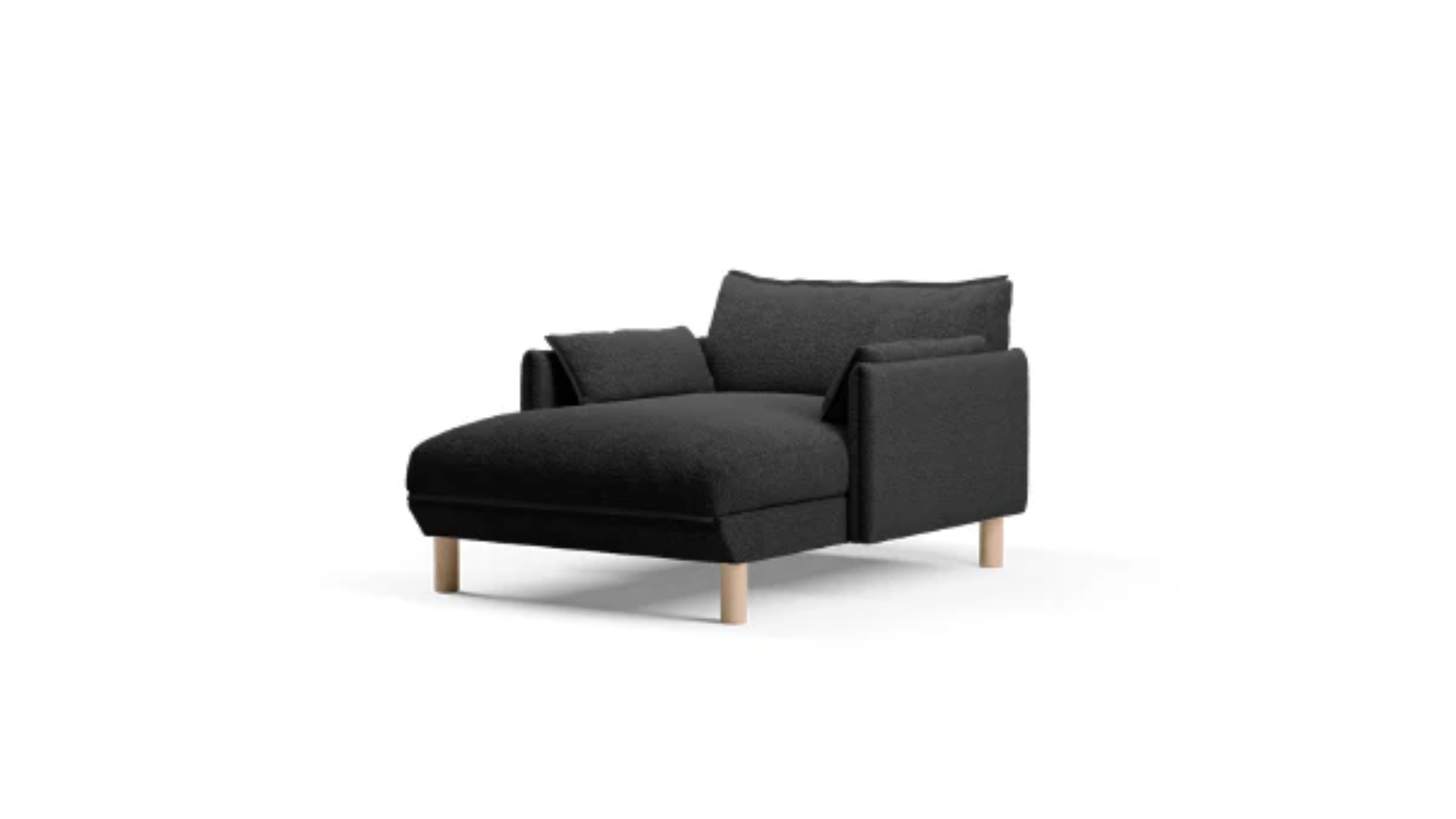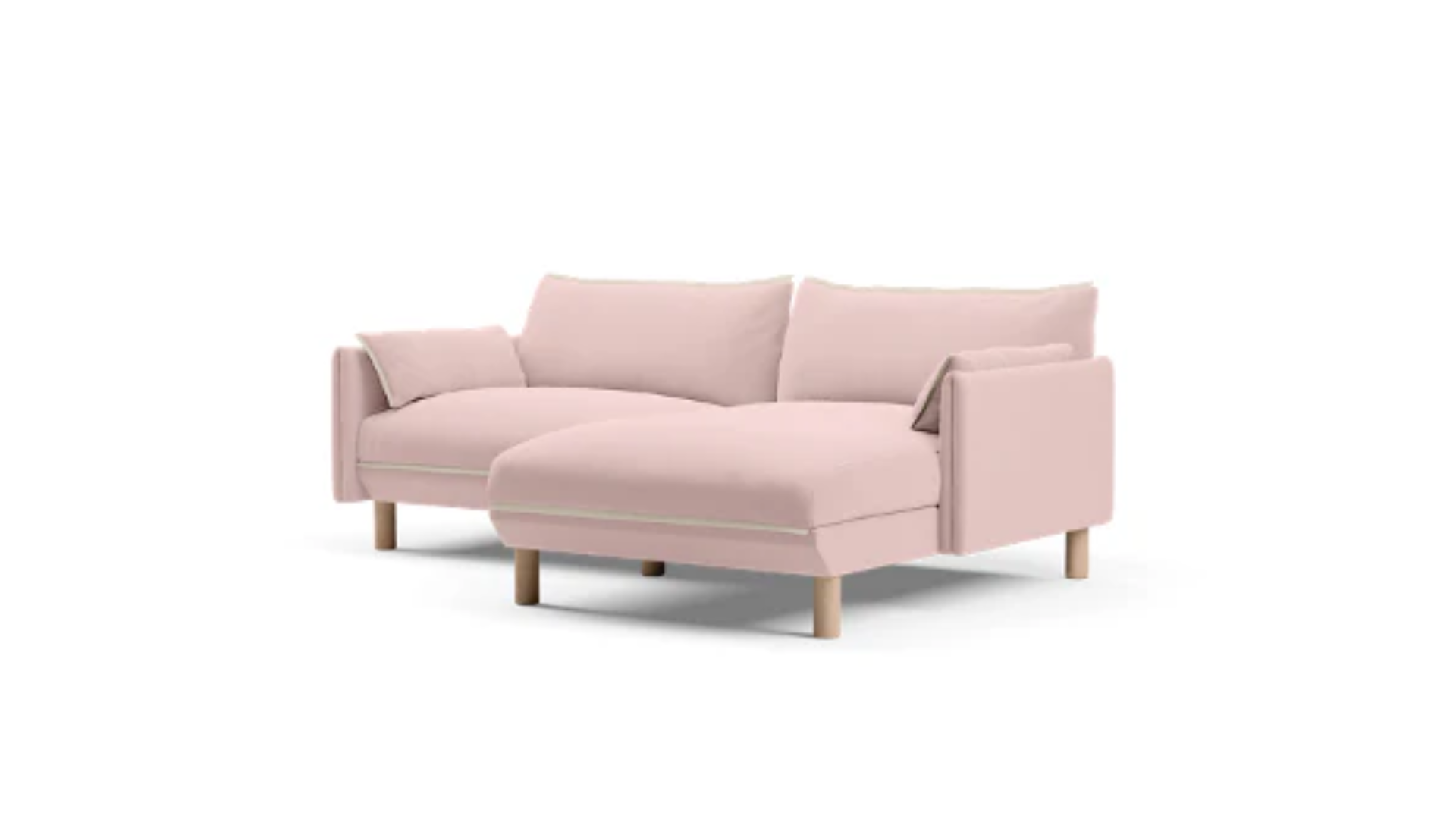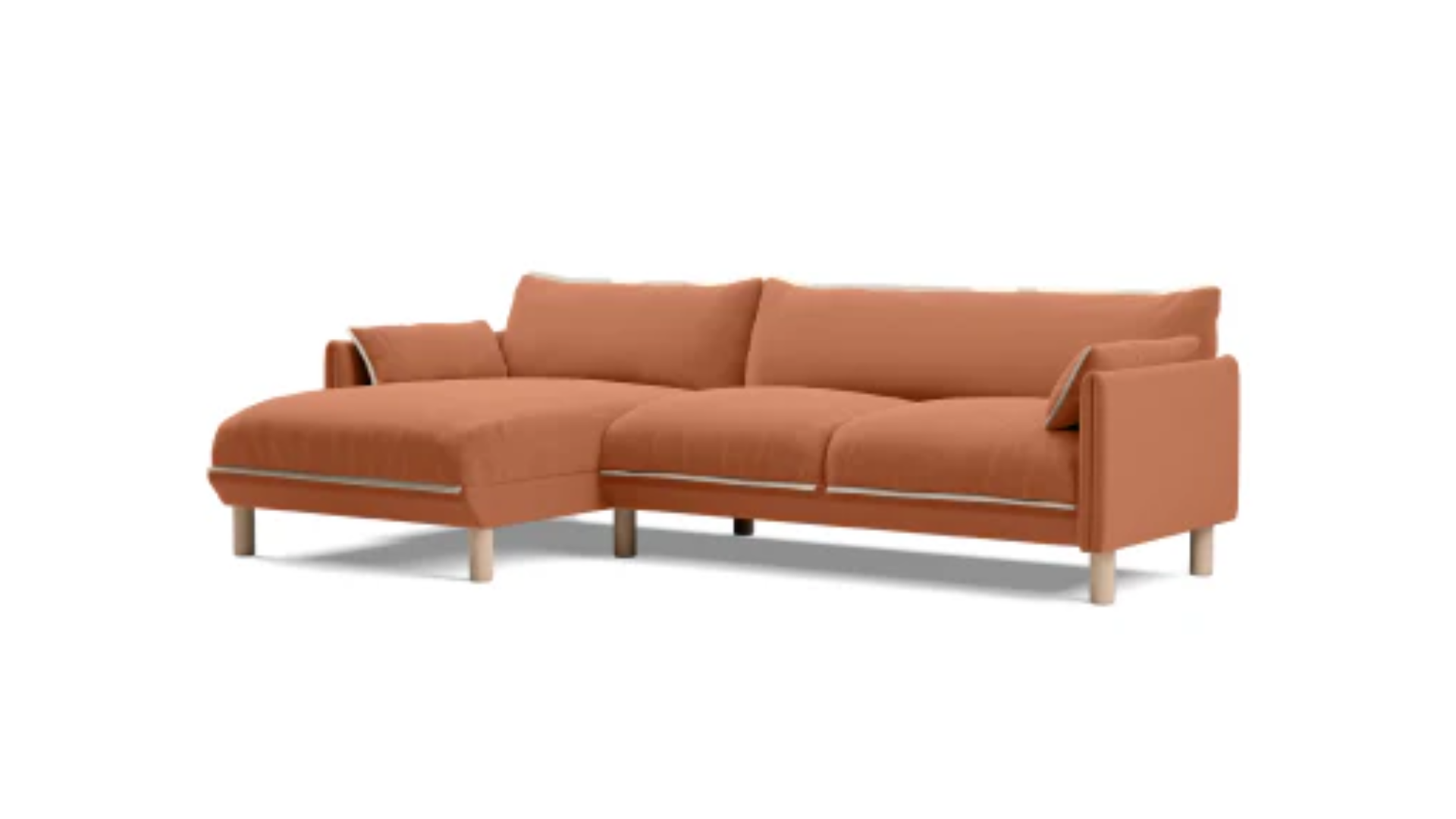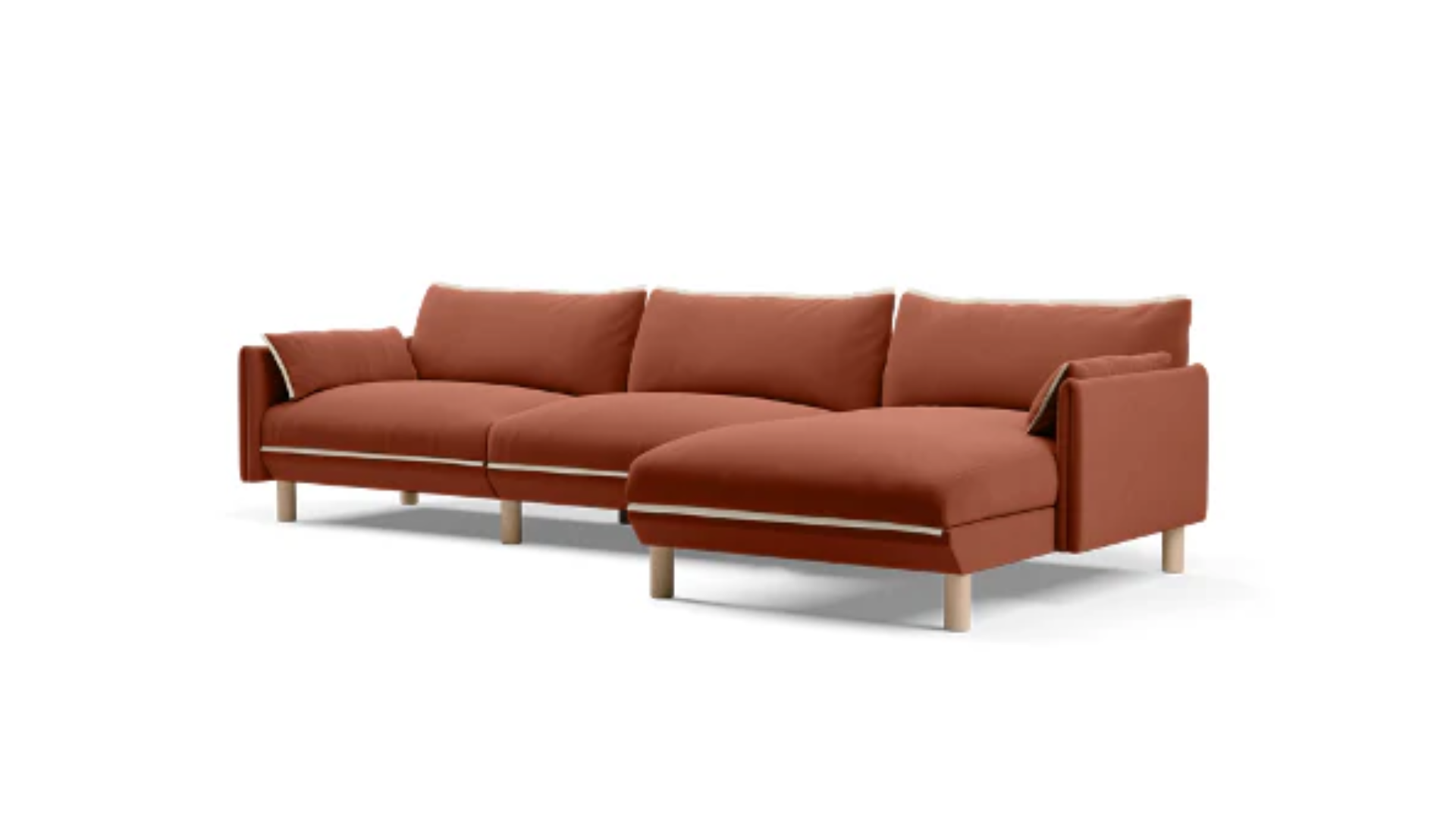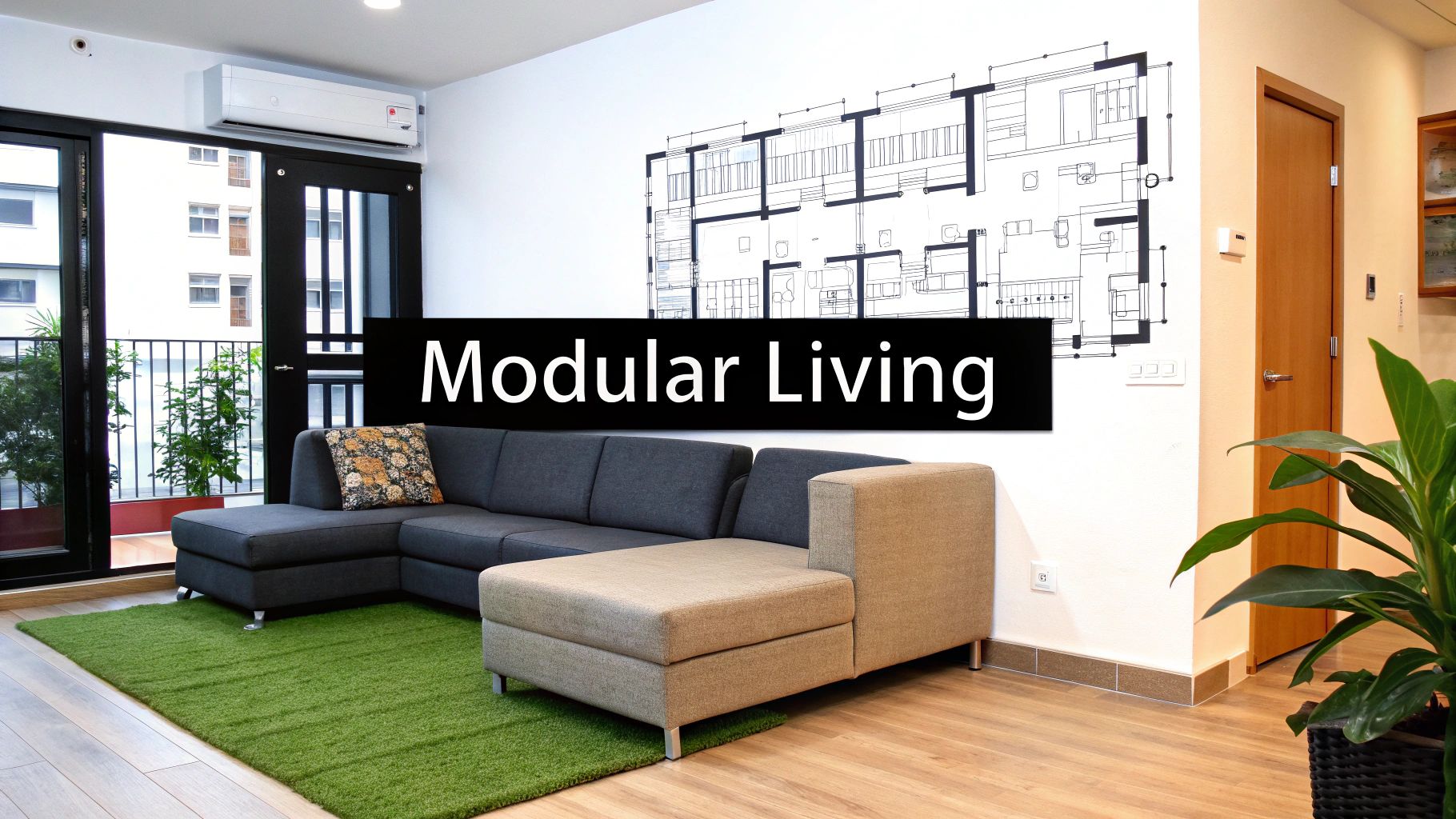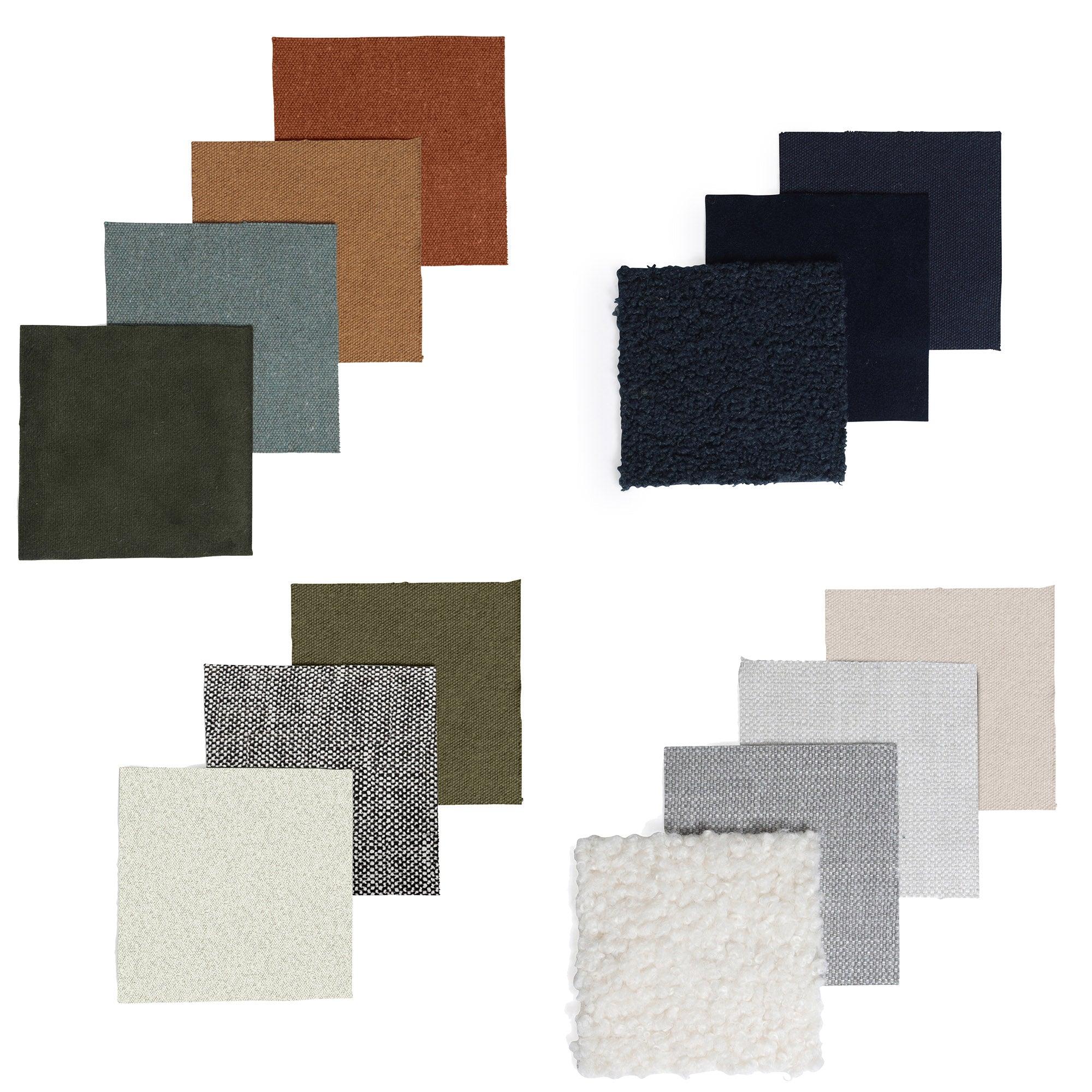"Modern space living" isn't some far-fetched idea about living in sterile, futuristic pods. It's a really practical design philosophy that's all about making your home work smarter for you. Think of it as creating your own personal ecosystem where smart design and intentional choices come together to boost your physical and mental wellbeing—a concept that hits close to home here in Singapore’s dynamic urban landscape.
What Does Modern Space Living Actually Mean?
Let's cut through the buzzwords. Modern space living is a holistic way of looking at your home. It's not just a physical structure; it's an environment that should actively support and adapt to your lifestyle. It’s about making every square metre count through intelligent design, not just cramming more stuff into a tight spot. At its core, this philosophy is all about creating a sense of ease, efficiency, and comfort.
Picture your home as a perfectly organised personal assistant. It seems to know what you need, removes friction from your daily routines, and offers a calm sanctuary from the hectic world outside. That, right there, is the heart of modern space living.
The Core of the Philosophy
This whole approach is really defined by a few key ideas that work together to completely transform a space. It’s less about a specific look and more about a set of guiding principles.
- Intentionality: Every single piece of furniture, every colour on the walls, and every layout decision is made with a clear purpose in mind.
- Adaptability: Your home isn't static. It can effortlessly shift its function to suit whatever you need—from a quiet, focused workspace to a lively entertainment hub for friends.
- Wellbeing: The design puts a premium on elements like natural light, clean air, and uncluttered sightlines to help boost your mental clarity and lower stress levels.
This focus on creating supportive environments isn't just a trend for homes. In fact, Singapore's commitment to this idea is mirrored in its growing space ecosystem, which now includes over 2,000 professionals and researchers across more than 60 companies. Their work is all about integrating space-enabled services into our daily urban lives, with the goal of making the nation a key player in the global space ecosystem by 2030.
"The goal is to create a personal ecosystem where smart design, thoughtful technology, and intentional choices come together to maximize your physical and mental wellbeing."
To make this even clearer, here’s a quick breakdown of what these principles look like in action.
The Core Principles of Modern Space Living
This table summarises the fundamental pillars that define the modern space living philosophy, making the concept easy to grasp.
| Principle | What It Means for Your Home | Example |
|---|---|---|
| Intentionality | Every item has a purpose and a place. | Choosing a modular sofa that can be reconfigured for guests or a quiet night in. |
| Adaptability | Spaces can easily change function. | A dining table that doubles as a spacious work-from-home desk. |
| Wellbeing | Design choices that support your health. | Positioning mirrors to maximise natural light and create a sense of openness. |
These principles guide you toward creating a home that feels both intuitive and deeply personal.
Aesthetics and Practicality Combined
Now, while function is king, that doesn't mean aesthetics get left behind. The look is often clean, uncluttered, and sophisticated, favouring quality pieces over sheer quantity.
Achieving this modern aesthetic often involves using specific design elements to define and anchor the space. For instance, impactful art like modern abstract paintings can act as a powerful focal point, injecting personality without adding to the clutter.
Ultimately, modern space living empowers you to curate a home that is both beautiful and incredibly functional. It transforms your HDB or condo from just a place to live into a genuinely supportive environment that truly enhances your life.
The Three Pillars of Smart Home Design
 To really get a handle on modern space living, we need to think beyond just how a home looks. It’s about diving into the core principles that make a space both beautiful and brilliantly functional. You can think of it as a design philosophy held up by three powerful pillars.
To really get a handle on modern space living, we need to think beyond just how a home looks. It’s about diving into the core principles that make a space both beautiful and brilliantly functional. You can think of it as a design philosophy held up by three powerful pillars.
When these pillars work together, they create a living environment that just flows—it’s cohesive, efficient, and genuinely satisfying to be in. Let’s break down what these foundational ideas really mean for your home.
Purposeful Minimalism
This first pillar often gets a bad rap. Purposeful minimalism isn't about stripping a room down until it's cold and empty. Far from it. It's really the art of intentional curation. This principle challenges you to surround yourself only with things that serve a clear purpose or bring you real joy. It’s all about quality over quantity.
Take a look at your living room. Do you really need three side tables when one beautifully designed piece would do the job? Is your media console overflowing with old DVDs and forgotten gadgets? Purposeful minimalism is about editing your space with a firm hand, clearing out the clutter to give yourself physical and mental breathing room. What you’re left with is a calm, organised space where the items you do own can finally shine. This approach also happens to be more sustainable—choosing fewer, better things means less waste, and it's important to consider the importance of longevity in furniture design to make choices that last.
Adaptive Multi-Functionality
The second pillar, adaptive multi-functionality, is the secret weapon for modern living, especially here in space-conscious Singapore. This principle is all about making every square metre—and every piece of furniture—work that much harder. It's a design strategy that bakes flexibility right into the DNA of your home.
A home should be a dynamic environment that can transform to meet your changing needs, not a static space that dictates how you must live.
Just think about these real-world examples:
- The Transforming Table: A sleek coffee table that effortlessly lifts to become a comfortable dining table or a work-from-home desk.
- The Hidden Bed: A stylish wall unit or sofa that cleverly conceals a comfy guest bed, ready to be pulled out whenever you need it.
- The Modular Hero: A sofa, like our Cozmo, that can be reconfigured from a cosy two-seater into a sprawling L-shaped sectional just in time for hosting family during Chinese New Year.
This kind of adaptability means your home can shift from a private sanctuary to a social hub in minutes. It’s about investing in smart, versatile pieces that solve multiple problems within a single footprint, maximising your space without ever compromising on style.
Invisible Technology Integration
Our final pillar is what truly brings a home into the 21st century. Invisible technology integration is about weaving smart features into the very fabric of your home for seamless convenience, not more clutter. Honestly, the best smart tech is the kind you don't even notice—until you need it. It’s not about covering every surface with gadgets and blinking lights.
Instead, it’s about creating an intuitive environment that practically anticipates what you need.
- Smart Lighting: Imagine lights that automatically adjust their brightness and colour temperature throughout the day to support your natural body clock.
- Automated Climate Control: A smart thermostat that learns your habits to optimise energy use, saving you a nice chunk on your electricity bill.
- Voice-Activated Assistants: Built-in speakers that let you control music, set timers, and get information, all without lifting a finger.
Even things like installing energy-efficient window coverings play a part, as they can automatically manage light and temperature. The whole point is to reduce the little frictions in your daily routine by automating everyday tasks.
When these three pillars—Purposeful Minimalism, Adaptive Multi-Functionality, and Invisible Technology Integration—come together, they create a powerful synergy. Your home stops being just a collection of rooms and evolves into a responsive, efficient, and beautiful system designed for the way we live now. This holistic approach is the key to unlocking a better quality of life in any home, no matter its size.
Practical Space Optimisation Strategies for Your Home
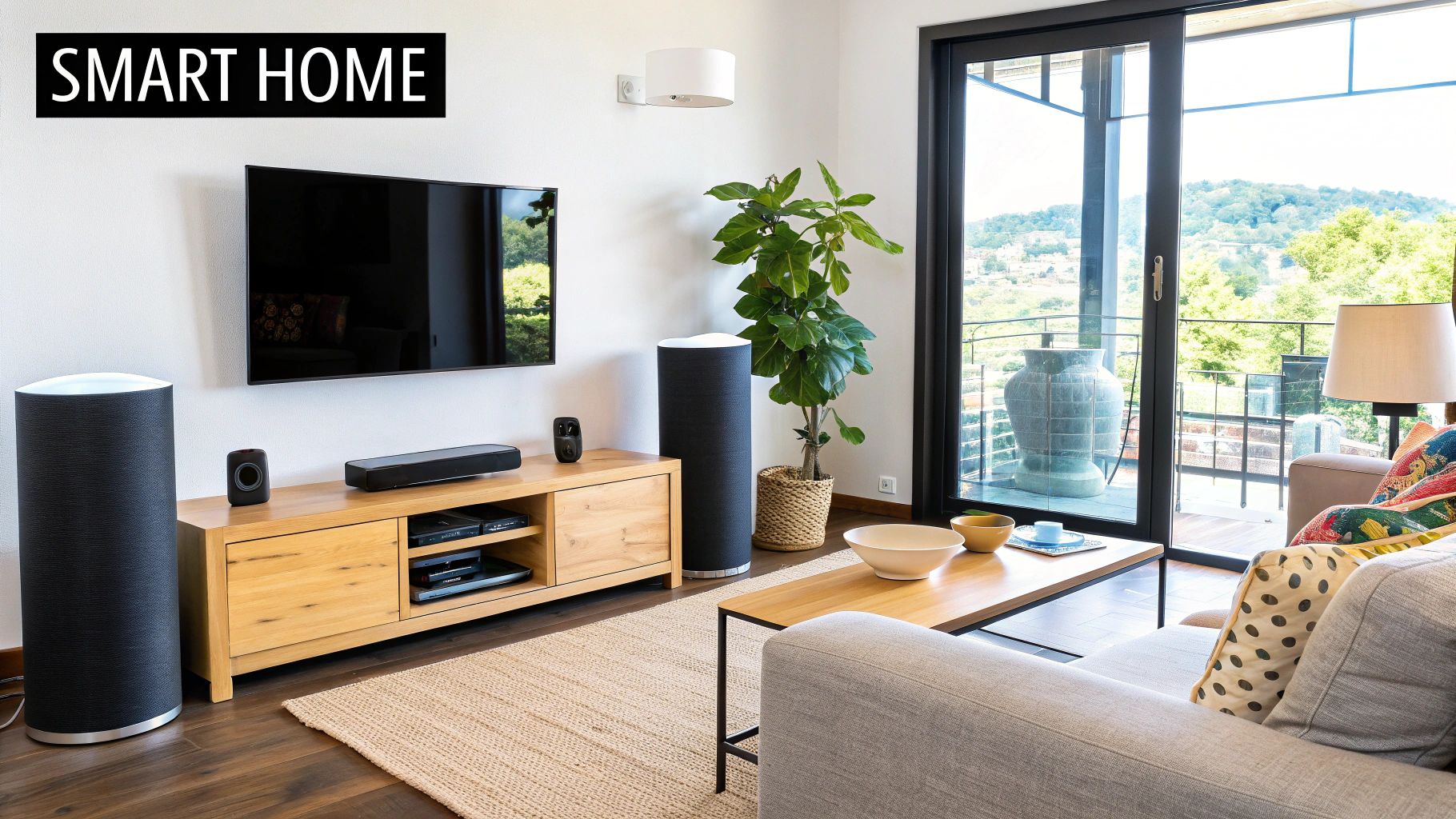
Alright, let's move from theory to reality. It's time to get practical with some space-saving strategies that are a perfect fit for Singaporean homes. Achieving a sense of modern space living doesn't mean you have to knock down walls or start a massive renovation. Most of the time, it’s just about making smarter choices with the space you've already got.
These ideas are all about reclaiming precious floor space, creating a feeling of openness, and carving out distinct zones without putting up a single wall. By putting these tips into action, you can make your HDB or condo feel a whole lot bigger and more liveable.
Go Vertical and Reclaim Your Floor
In a compact city home, every square inch of the floor is prime real estate. The single most effective way to multiply your storage without eating into your living area is to start thinking upwards. When you draw the eye vertically, you not only create a sense of height and airiness but also tap into a huge amount of unused storage space.
Think about it: floor-to-ceiling bookshelves can transform a boring wall into a personal library and a showcase for your favourite things. In the kitchen or bedroom, tall, slender cabinets can hold an incredible amount of stuff while taking up hardly any floor space. This is a cornerstone of modern space living.
"Vertical storage is the ultimate space-saving hack for apartment dwellers. It forces the eye upward, making ceilings feel higher while keeping floors clear and uncluttered."
But this strategy is more than just adding a few shelves. It’s a complete shift in how you see your space. Instead of spreading out, you build up. This keeps your main living areas open and uncluttered, which is a win for both moving around freely and for your peace of mind.
Harness the Power of Light and Mirrors
Never, ever underestimate the power of light. A room that’s well-lit just feels bigger, cleaner, and more welcoming. Your first mission should be to let in as much natural light as possible. Go for light and airy window treatments, like sheer curtains or blinds that you can pull all the way up.
Mirrors? They’re your secret weapon. A big, well-placed mirror does more than just show your reflection; it can visually double the size of a room.
Here are a few clever spots to place them:
- Opposite a window: This is the classic trick for a reason. Placing a mirror here catches all that beautiful natural light and bounces it right into the room, brightening up even the darkest corners.
- In a narrow hallway: A long mirror running down a tight corridor can instantly make it feel wider and less cramped.
- Behind a light source: Pop a mirror behind a table lamp or floor lamp. In the evening, it’ll amplify the glow, adding a warm and cosy depth to the space.
By mixing natural light with reflective surfaces, you create a real sense of openness that can completely change how a room feels.
Define Zones with Colour and Texture
Open-plan living is fantastic, but sometimes it can feel like one big, undefined space. The answer isn't to build walls—it's to create "zones" using visual hints. This clever trick lets you set aside specific areas for different activities, like living, dining, and working, all within the same room.
Colour is a great way to do this. You could paint a feature wall a different colour to anchor your dining nook, or use a large, bold rug to mark out the seating area in your living room. A good rule of thumb is to leave a 24-inch gap between the rug and the wall to keep that feeling of spaciousness.
Texture does the same job. Think a plush, high-pile rug for the cosy living zone and a smooth, woven one for the dining space. These subtle changes in material help signal a switch in function without any physical barriers. And when you're trying to make the most of every square foot, choosing the right furniture is key. You can find some brilliant ideas in guides on Top Office Furniture for Small Spaces to Maximize Your Space, which can really help you set up an effective home office zone.
How Modular Furniture Unlocks Modern Living
If purposeful minimalism and multi-functionality are the core ideas behind modern space living, then modular furniture is the tool that makes it all happen. It’s the real hero in creating a smart, adaptable home.
For anyone living in a Singaporean HDB or condo, adaptability isn't just a bonus; it’s the new standard of luxury. Think about it. Your life is always changing, so why should your furniture be stuck in one place? Modular pieces, especially sofas, are designed to evolve with your needs. This simple idea completely changes how we think about our main living spaces—they should serve us, not the other way around.
The Power of True Adaptability
At its heart, modular furniture is about giving you complete control over your environment. This freedom is what truly unlocks the potential of modern space living.
The benefits are immediate and incredibly practical for city dwellers:
- Reconfigure on Demand: Effortlessly switch your layout from a cosy movie night setup to an open, spacious room for hosting a party.
- Move with Ease: Anyone who’s tried to squeeze a traditional three-seater sofa through a narrow HDB corridor knows the pain. Modular pieces can be moved one section at a time, making moving day much less of a headache.
- Grow with Your Life: Your furniture can grow with you. That two-seater you bought for your first BTO can easily expand with more modules to become a family-sized sectional years down the road.
This chart really drives home the difference between a minimalist, modern approach and a more traditional one, showing how smart choices directly impact things like natural light and personal space.

As you can see, a minimalist mindset—which is central to modern design—directly leads to more natural light and a greater sense of personal space. It’s all about creating a less cluttered and more open home.
A Story of a BTO Flat
Picture a young couple moving into their new BTO flat. They're thrilled, but also mindful of their budget and the compact space. Instead of committing to a large, fixed sofa, they opt for a modular two-seater from Cozmo. For the first year, it’s the perfect cosy spot just for them.
Then, a year later, they decide to host their first Chinese New Year gathering. Instead of stressing about seating, they simply order an extra corner module and an ottoman. Just like that, their sofa transforms into a comfortable L-shaped sectional that has room for the whole family. This is modern space living in action—furniture that solves problems instead of creating them.
"The ultimate luxury is a home that adapts to you. Modular furniture makes this possible, offering a sustainable, flexible, and intelligent solution for the way we live today."
This approach is also more sustainable. If a pet damages a section or a spill happens, you don’t have to replace the entire sofa. You can just replace that one module, which is kinder to your wallet and the planet. To see how top designers are thinking about furniture longevity and style, check out the highlights from the best of Milan Design Week 2022.
Modular vs Traditional Sofas in a Singaporean Home
To truly get a feel for the difference, it helps to see a direct comparison. Here's a look at how a modular sofa stacks up against a traditional one, especially for life in Singapore.
| Feature | Modular Sofa | Traditional Sofa |
|---|---|---|
| Adaptability | Can be reconfigured, expanded, or downsized as your life changes. | Fixed size and shape. What you buy is what you get, forever. |
| Moving & Delivery | Easy to carry through tight HDB corridors and lifts, piece by piece. | Often requires professional movers; sometimes it just won't fit. |
| Repairs | A single damaged section can be replaced individually. Simple. | The entire sofa often needs to be reupholstered or thrown out. |
| Customisation | Mix and match modules and fabrics for a completely personalised look. | You're limited to the original design and fabric you chose. |
In the end, modular furniture isn’t just a passing trend; it’s a smarter way to furnish your home. It gives you the physical framework you need to live out the principles of an adaptive, beautiful, and functional modern space.
A Modern HDB Makeover in Action
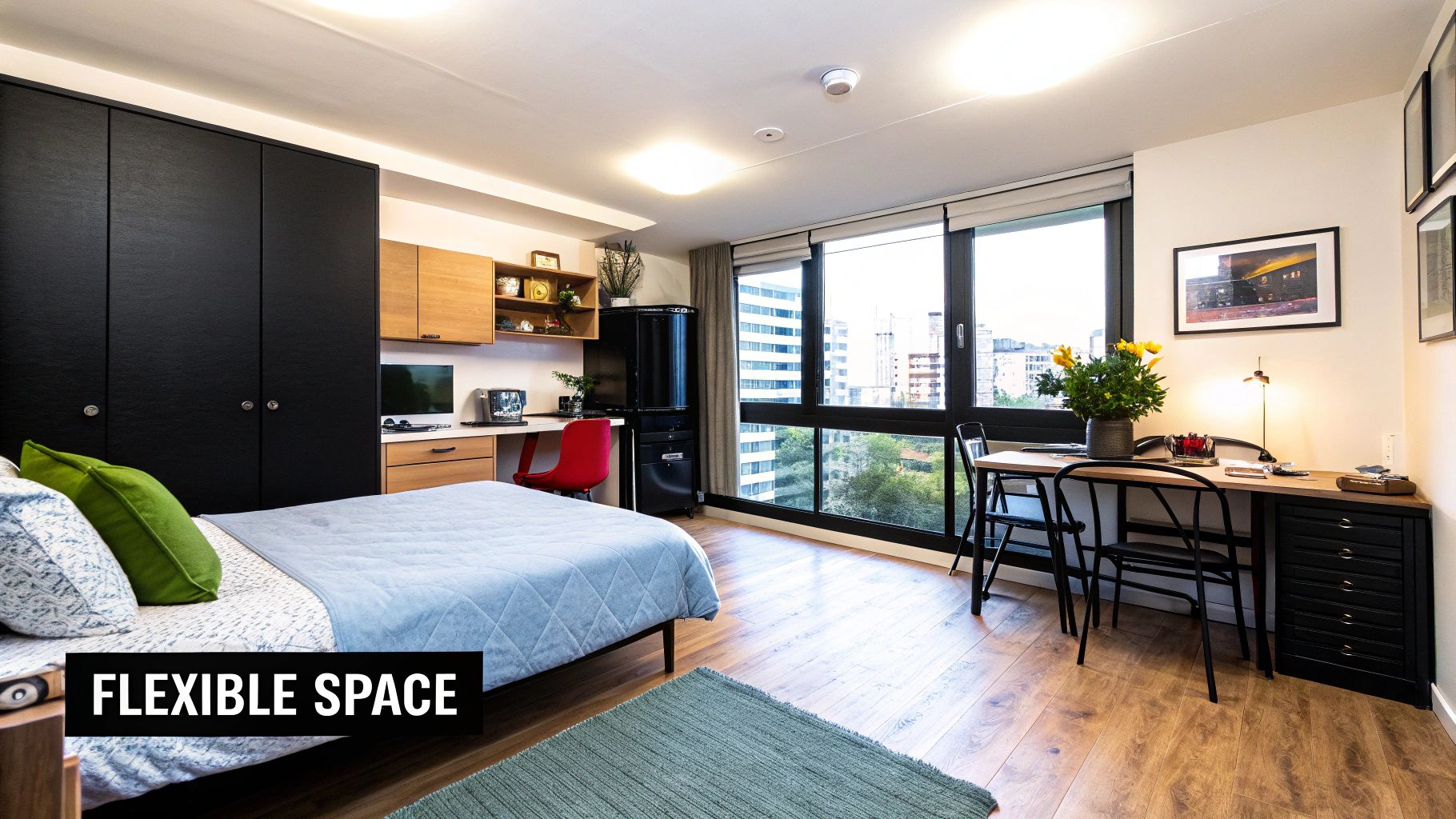
Abstract ideas are one thing, but seeing them click into place in a real home is where the magic really happens. Let's walk through a makeover of a standard 4-room HDB flat to show how the principles of modern space living can completely reshape a home from the ground up.
Meet our homeowners: a young family who felt their living area was cluttered, cramped, and totally inflexible. They needed a space that could handle the beautiful chaos of daily life with kids, but also transform for weekend get-togethers and feel like a peaceful retreat at the end of a long day. Here’s how they did it.
Their first move was to embrace purposeful minimalism. This wasn’t just about getting rid of stuff; it was about curating their life. Out went the bulky, mismatched furniture and random knick-knacks. They kept only what was truly functional or held deep sentimental value, instantly making the room feel bigger and more intentional.
Creating Zones Without Walls
With a cleaner slate, the family focused on carving out distinct zones in their open-plan living area. They didn't put up a single wall. Instead, they used clever visual tricks to define the living room, the dining space, and a small play area for their child.
- The Living Zone: A large, low-pile rug became the anchor for this space. It wasn't just for warmth and texture; it clearly marked the boundary of the main seating area. By placing at least the front legs of their sofa and armchair on the rug, they made the whole layout feel connected and cohesive.
- The Play Nook: In one corner, they laid down colourful, interlocking foam tiles. This simple, affordable touch created a dedicated soft surface for their child to play on. It visually separated the nook from the rest of the living space while helping to keep toys (mostly) contained.
This method of using rugs and flooring to define areas is a cornerstone of modern space living. It keeps the open, airy feel of the flat while giving every square metre a clear job to do. This kind of careful space management is crucial, echoing the broader challenges Singapore faces with its public areas. In fact, a 2023 survey revealed that 12% of respondents saw homelessness as a key issue in city centres, highlighting just how tough managing shared spaces can be. By using smart design, we can improve livability for everyone. You can find more on the challenges of public space at PPS.org.
The Heart of the Home: The Modular Sofa
The single most transformative change they made was the sofa. They chose a Cozmo modular sofa, which quickly became the adaptable, hardworking heart of their home. For everyday family life, they kept it in a classic three-seater configuration, which left plenty of floor space for their child to roam and play.
But the sofa’s multi-functional design really shines when they have people over.
For their annual Chinese New Year gathering, they can effortlessly reconfigure the sofa. By moving the modules apart and popping the ottoman in the centre, they create an inviting, U-shaped conversation pit. Suddenly, the living room becomes a social hub where everyone has a comfortable spot.
This is the power of adaptive furniture in action. The sofa isn't just a static piece of furniture; it's a dynamic tool that lets them customise their space whenever they need to.
Final Touches of Modern Space Living
To complete the makeover, the family brought in the other key principles we’ve talked about. They installed floor-to-ceiling shelving along one wall, "going vertical" to store books and display treasured items without eating into their precious floor space.
They also wove in invisible technology. Smart LED strips were tucked behind the TV console and under the new shelves, casting a soft, ambient glow that they could control with their phones. This added a layer of warmth and sophistication without any visible clutter.
The result? Their HDB living room is now a true testament to modern space living. It's a flexible, organised, and beautiful space that adapts perfectly to every part of their lives—from quiet family evenings to big festive parties. It’s a tangible example of how thoughtful design can turn any home into a truly supportive and functional environment.
Your Questions About Modern Space Living Answered
Stepping into the world of modern space living is exciting, but it’s completely normal to have a few questions. It’s a design philosophy that challenges old ideas about what a home should be, so a little hesitation makes sense. This section is here to tackle the biggest myths and clear up any confusion.
We’ll get straight to the point on the most frequent questions people ask when they first consider this smarter, more intentional way of living. Our goal is to give you the confidence to start making small but powerful changes in your own home.
Does Modern Space Living Mean My Home Has to Look Cold and Empty?
Not at all. This is probably the biggest misconception out there, but it couldn't be further from the truth. While modern space living does borrow from minimalist principles, its real focus is on intentionality, not emptiness. The idea isn’t to get rid of everything until the room echoes.
It’s about ‘purposeful minimalism’ – a thoughtful approach where you surround yourself with fewer, but better, items that you genuinely love and use. It’s about clearing away the visual clutter that creates mental static, giving you space to breathe, both physically and mentally.
You can build a warm, inviting home by focusing on:
- Rich Textures: Think of a plush wool rug, a soft linen throw, or the smooth grain of a wooden side table. These elements add depth and a tactile sense of comfort.
- A Thoughtful Colour Palette: Forget sterile white. Warm neutrals, deep accent colours, and earthy tones can make a space feel incredibly cosy and personal.
- Personal Touches: This is key. It’s about displaying items that mean something to you—your own art, cherished photographs, or vibrant green plants that bring life into the room.
The real goal is a home that feels organised and calm, yet is unmistakably yours—not a cold, generic showroom.
Is This Design Style Expensive to Implement in Singapore?
It can be, but it absolutely doesn't have to be. Really, it’s more about a shift in mindset than a big budget. A high-quality, multi-functional piece like a modular sofa might have a higher upfront cost, but it's a smart long-term investment.
Think about the savings down the line. A modular sofa with a pull-out bed means no need for a separate guest bed. If one part gets damaged, you only replace a single module, not the whole couch. You’re buying smarter, not just more expensive things.
Modern space living is about making strategic investments in pieces that solve multiple problems, while also embracing budget-friendly hacks that deliver huge results.
In fact, some of the most effective strategies are surprisingly affordable.
- Strategic Painting: Using a bold paint colour to create a "zone" for your home office or dining nook costs very little but completely transforms the feel of a room.
- Ruthless Decluttering: This is one of the most powerful changes you can make, and it costs nothing but your time.
- Optimising Light: Simply rearranging furniture and using mirrors to bounce natural light around is a free strategy with a massive payoff.
How Can I Start Without Doing a Full Renovation?
The best way to begin is with small, manageable steps. You can make a huge impact without the stress and expense of a full-blown renovation. This approach builds momentum and lets you see the benefits right away.
Try picking one room to focus on first, like your living room.
- Begin with Decluttering: Go through the space and remove anything that doesn't serve a clear purpose or bring you real joy. Be honest with yourself.
- Rethink Your Layout: Could you rearrange the furniture to improve traffic flow or create a better conversation area? Even pulling your sofa a few inches away from the wall can make a room feel less cramped.
- Swap One Key Piece: Consider replacing a single large item. Swapping a bulky, dated sofa for a sleek, modern modular one can instantly change the entire room's look and feel.
- Improve Your Lighting: Layer your light. Instead of relying on one harsh overhead light, bring in a floor lamp and a table lamp to create a warmer, more inviting mood.
Is This Style Suitable for Families with Children?
Absolutely. In fact, modern space living is arguably perfect for families because it’s built on principles of efficiency, smart storage, and adaptability—all things that make family life run a little smoother.
Multi-functional furniture is a complete game-changer here. A living room can switch from a kids' play area back to a sophisticated adult space in minutes. An ottoman with hidden storage can swallow up an entire afternoon's worth of toys.
Built-in, vertical storage is another family-friendly hero. Floor-to-ceiling cabinets can keep toys, books, and school supplies organised and out of sight, reducing the daily clutter that can cause stress. The focus on durable, high-quality pieces also means your furniture is better equipped to handle the rigours of daily family life. It’s all about designing a home that works for everyone in it.
If you have more specific queries or are looking for details on product care and policies, you can explore answers to many other questions in our comprehensive FAQ section for even more information.
Ready to unlock the potential of your home with furniture that adapts to your life? Discover the endless possibilities with Cozmo Home. Our premium modular sofas are designed for modern Singaporean living, offering unparalleled style, comfort, and flexibility. Explore the collection and find your perfect configuration today.
